14 hours, 100 pounds of elk, 40 pounds of wild boar, and enough pork fat to make a cardiologist call 911. That was the scene going on my kitchen a few days ago. The result, was over 250 pounds of sausage that did not all fit in my completely emptied-out full-sized fridge. It was epic. And a ton of work. This year’s lineup was four different types: Cajun Andouille, Texas hot links, spicy Italian, and one very special one: wild boar and porcini sausage.
Making this completely obscene amount of sausages was a marathon event, and was almost too much to handle without a commercial kitchen. Luckily, I had some help from my buddy Austin Holey, a good friend who spent many years as a private chef and worked at restaurants in France. He’s been my main sausage-making partner-in-grind for the last handful of years. He knows the program well, and we share a lot of interests across fishing, wild foods, etc, and have similar taste in food. Together we made a dizzying amount of links, and were up until 1am vac sealing packs of links until my (brand new) vacuum sealer broke from overuse.

I don’t always believe in following recipes for cooking. As everyone knows, some of the best timeless dishes were born out of necessity or accident. And that probably includes the original sausages that were made around the world by the first sausage makers 6000 years ago. I doubt sausages back then were bad — in fact they were probably amazing. But to make sausages with consistent quality, it’s both art and science. In addition to other things, salt ratios and fat percentages can be a fine line between a perfect texture and flavor, and something that is a crumbly and boring failure. Especially with wild game. So for some of the science and R&D aspect, I like to turn to people who live and breathe this stuff full-time for a living, and will usually pull from professional sausage recipes online or in books until I figure out if/how I want to change them. I’ll often borrow their math and salt ratios, then riff on it in various ways.
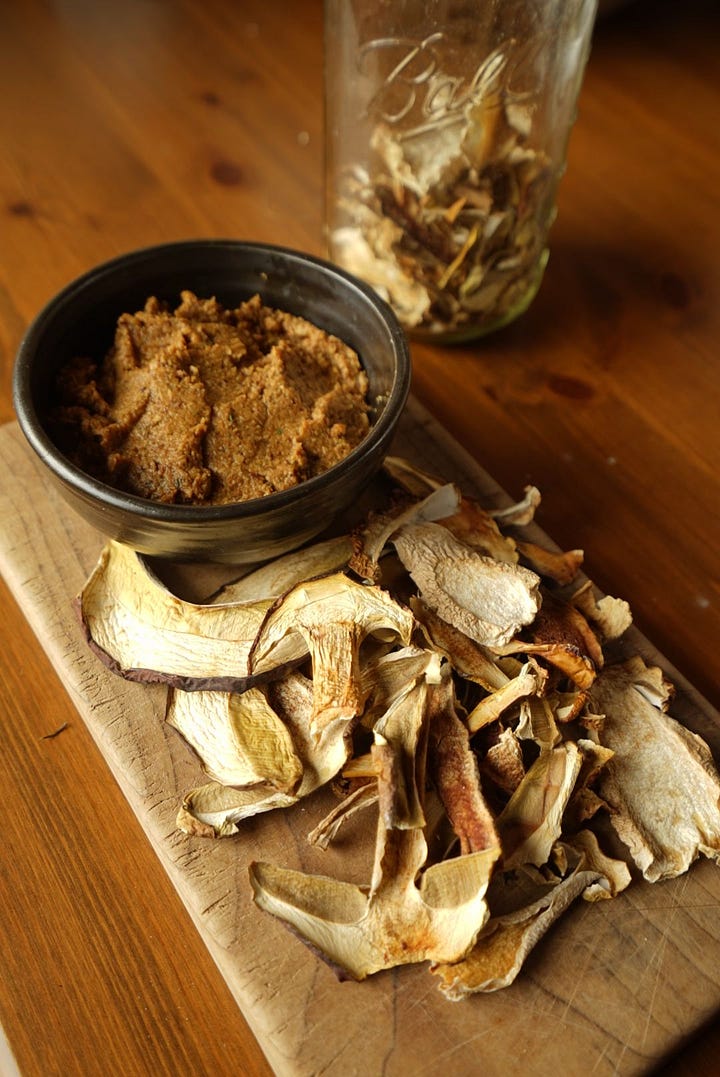
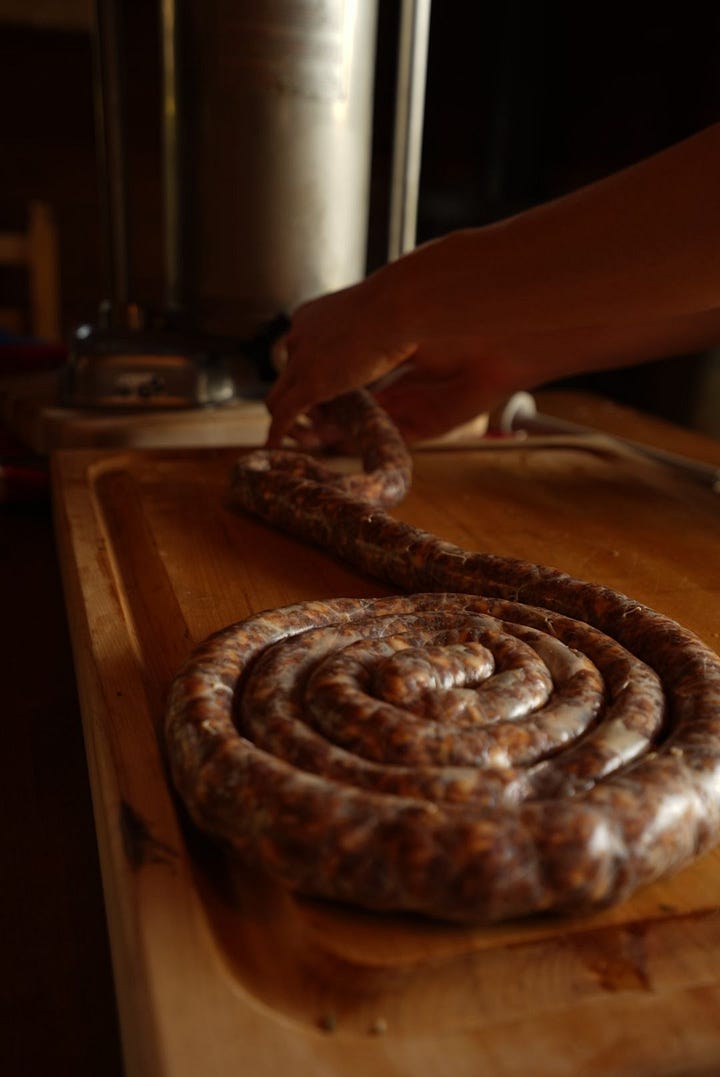

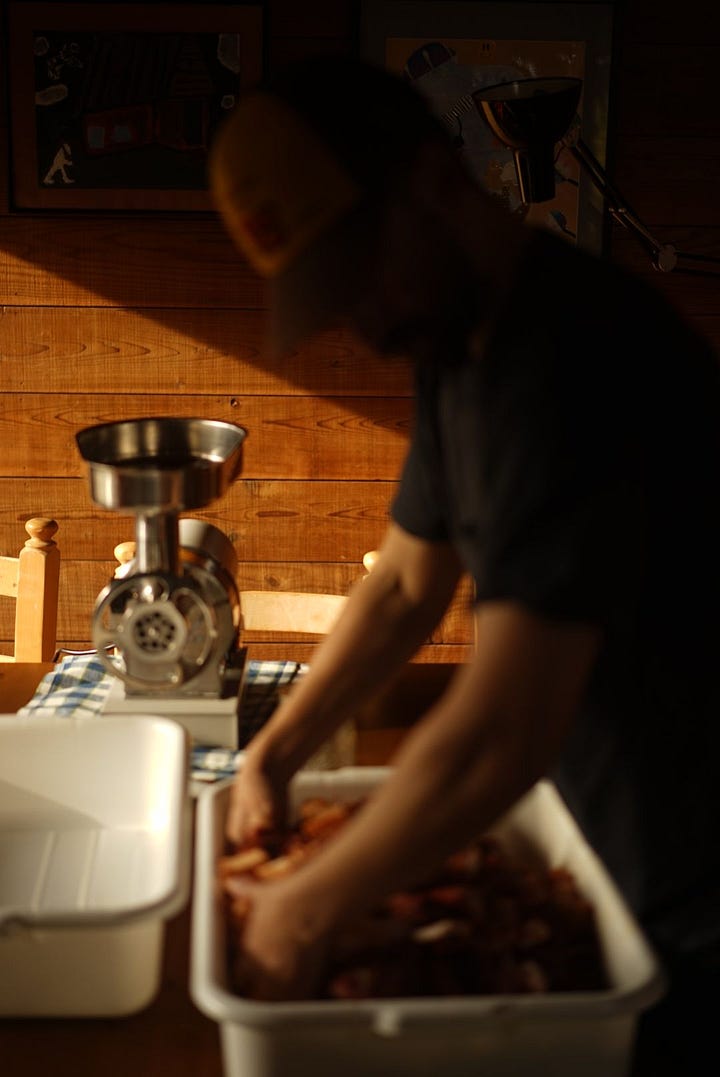
We made most of the sausages using elk meat — Texas hot links and Andouilles — both loaded with a ton of spices. For the wild boar sausage, we wanted to let the main ingredient shine, so we pared back the heavy seasonings, and let the hog do the talking with the addition of a bunch of rehydrated porcini mushrooms that I found this past winter. The boar recipe was far less crowded flavor-wise, yet somehow tastes more complex — and no, not in a “gamey” way. We taste tested all of the sausages throughout the process, to the point where we just about OD’d on them, and I’m most excited about how the boar sausages came out.
Below, is what we followed for the boar & porcini sausages, an adaptation of one of Hank Shaw’s simplest sausage recipes (if you are looking for professional sausage making instruction and info, especially with wild game, look no further than Hank). We opted to use far less spices than we originally planned for with these, and I’m happy that we did — because the natural flavor of wild hog meat and the umami of wild porcini speak enough for themselves. And they go great together.
Ingredients
10 lbs wild boar meat
5 lbs pork back fat
100 grams dried porcini mushrooms
99 grams kosher salt
30 grams garlic powder
10 grams fresh sage, minced
10 grams dried thyme
¾ bottle white wine
Hog casings
How to make:
1.) Cut your hog meat and pork fat into 1-inch pieces and throw into a big bowl or bus tub.
2.) Put your hog casings in lukewarm water and let them separate.
3.) Soak your porcini mushrooms in a bowl with the ¾ bottle of white wine for 30 mins to an hour. Once they’ve more or less rehydrated, throw them into a blender, along with most of the wine you’ve portioned out. Blend until it turns into a paste (it should look like miso when its done). If it’s not turning into a paste, continue adding as much wine as you need until it turns into a paste — liquid helps that process.
3.) Mix together all the remaining spices. Then add in your spice mixture and porcini paste into your bus tub of meat and fat, mix well with your hands.
4.) Put it through your grinder using a coarse die, ~10mm. Once all the meat has gone through, put it through again with the same die. Don’t be afraid to stop the grinder early on, make a patty, cook it and eat it to check if you want to add more of any spices to your liking.
5.) Fill your sausage stuffer with your grind, load on some castings to your stuffer, and fill up the casings. You’ll need to do some experimentation as to how tightly you should be stuffing the sausages, based on the size of the stuffer gauge that you’re working with.
6.) Pinch and twist off links that are the size of sausages you want to eat, alternating directions of your twist with every sausage that you portion out.
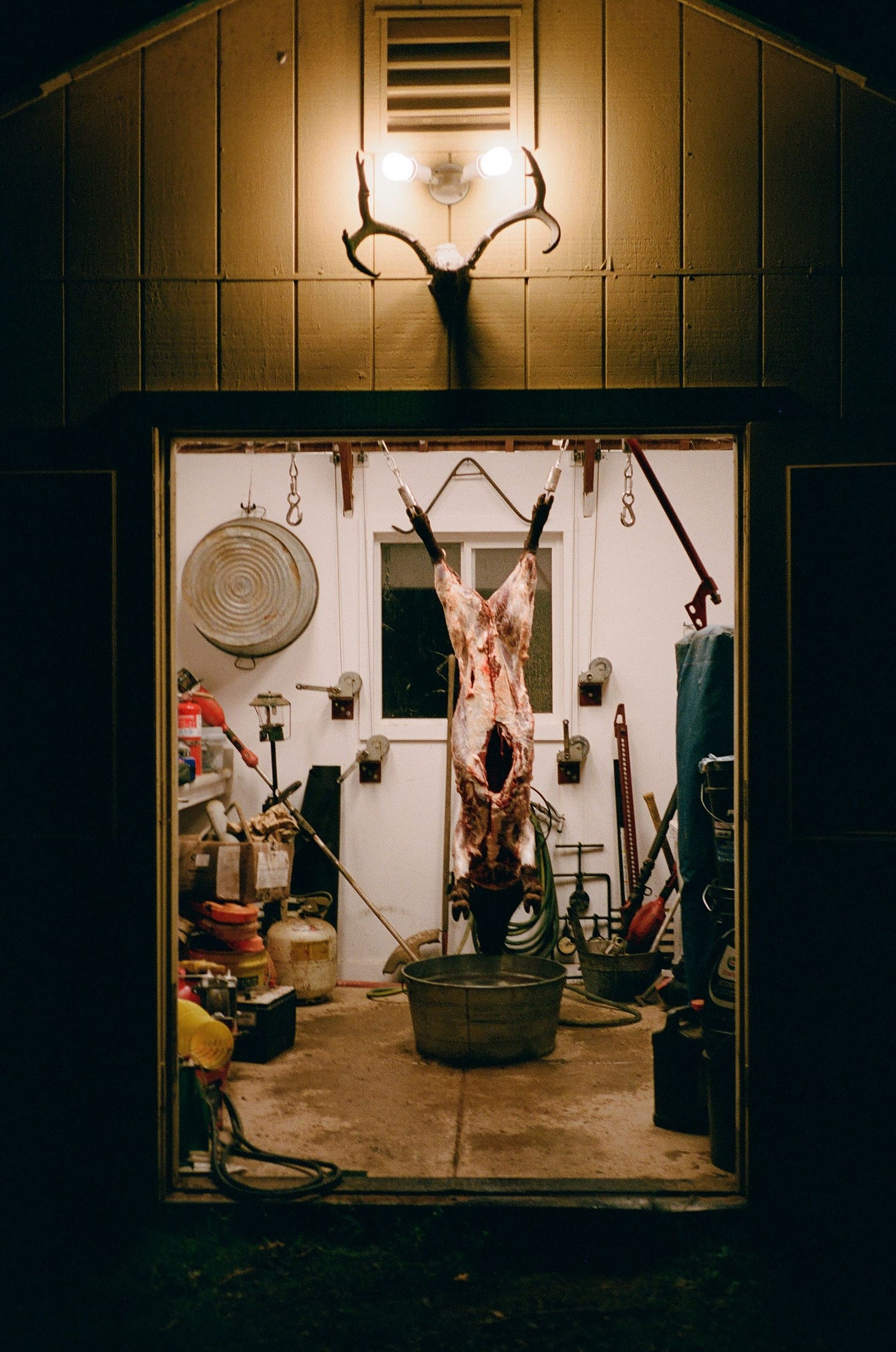

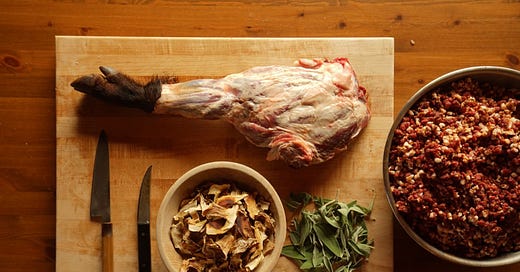



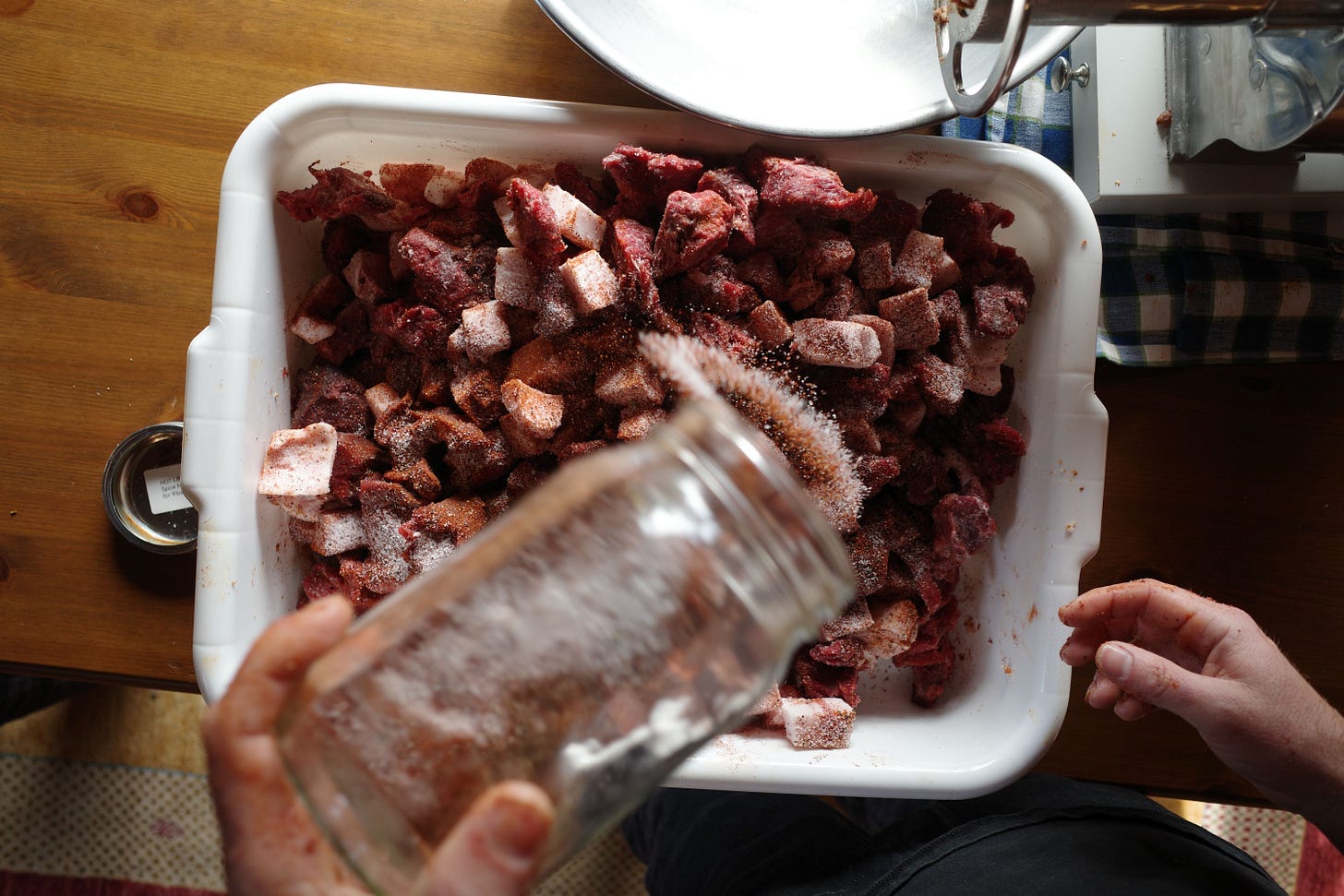
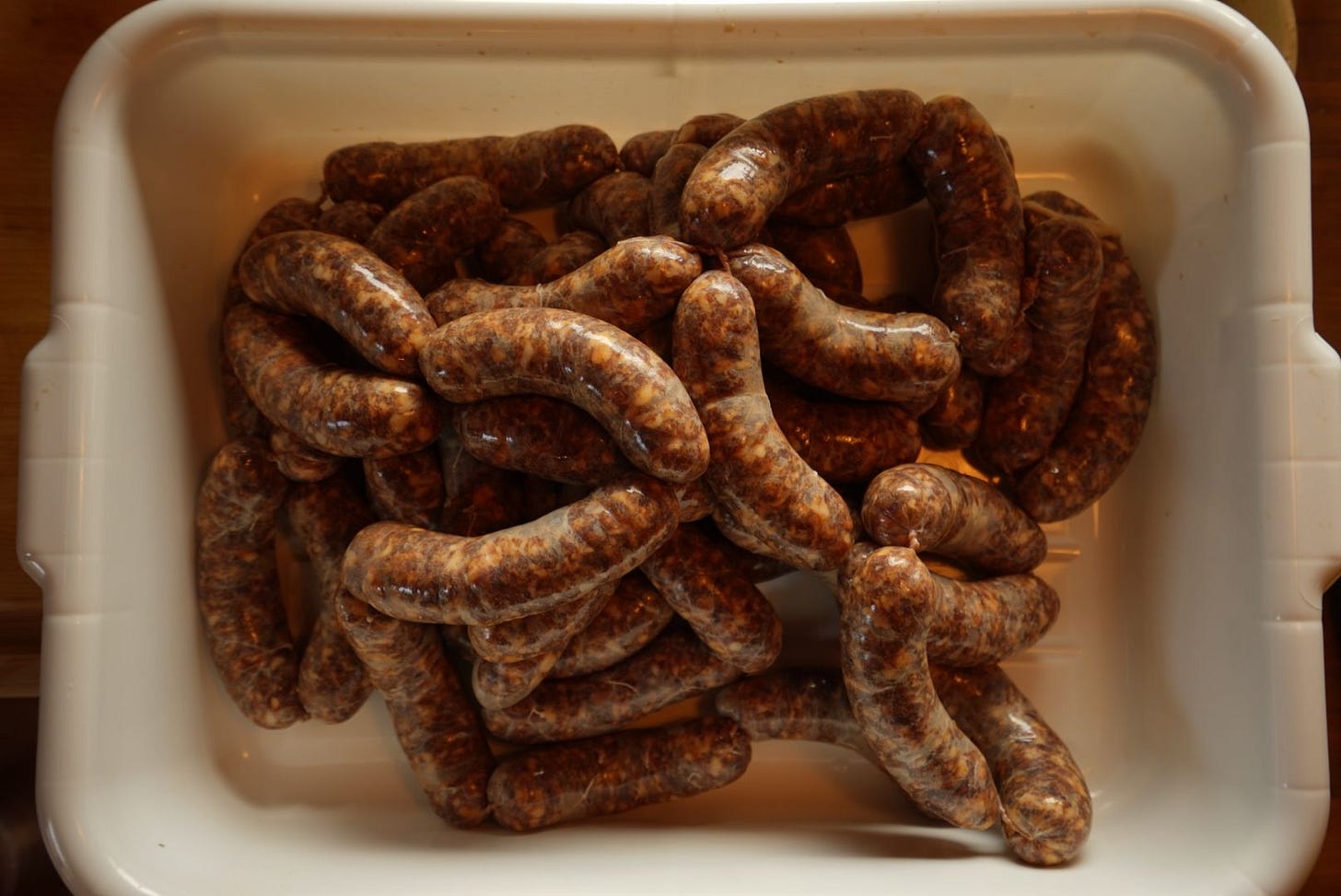
Excellent lede!
Aside from subscribing to your Substack, I'd GLADLY "support your work" by buying some of that sausage.